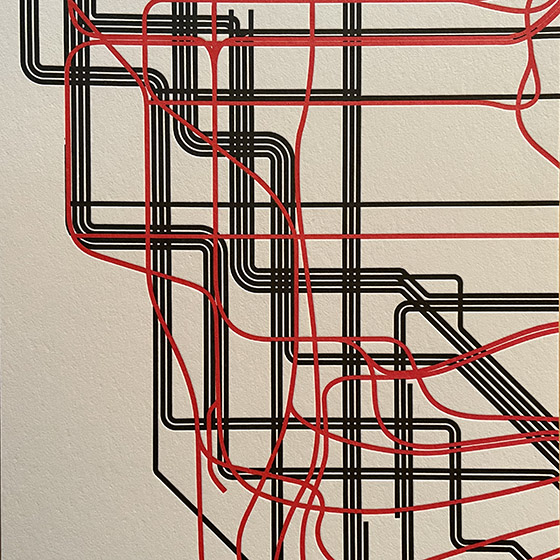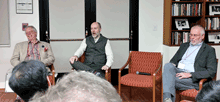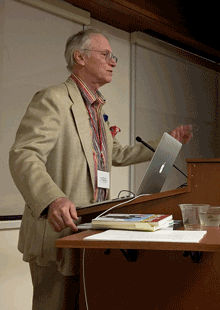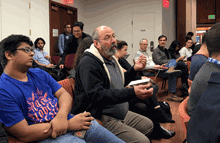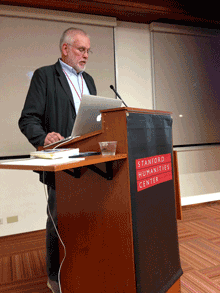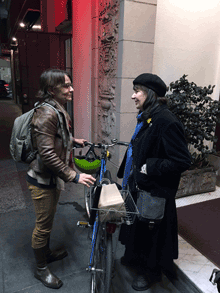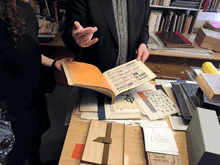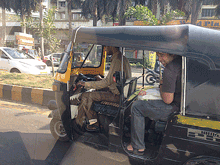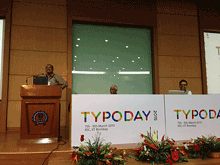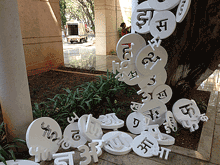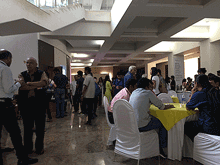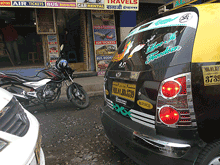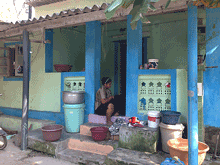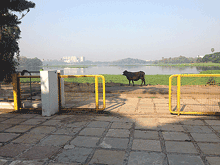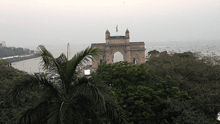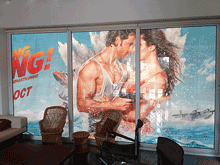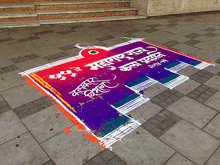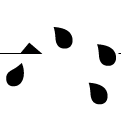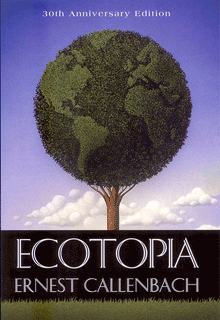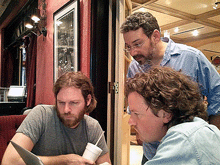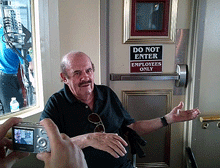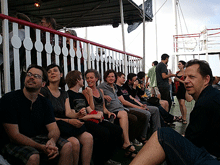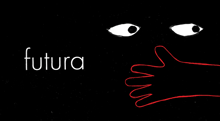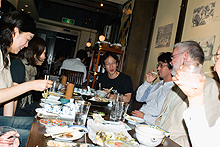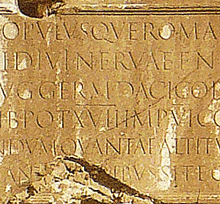“I can’t believe this is your first time,” said the young Indian woman with whom I was sharing the auto-rickshaw.
“It is, though,” I replied, calmly clutching a handhold as the three-wheeled vehicle careered through the traffic of northern Mumbai.
I hadn’t even encountered yet the full roar of the city, but Indian traffic was proving to be everything I had expected it to be. Chaotic, crowded, incredibly varied, and resoundingly effective at getting everyone around, despite the lack of any perceivable patterns. Drivers seemed to navigate by echo-location, honking fairly constantly to let other drivers know that they were approaching; and they might approach from pretty much any direction, or any side. Lanes, although clearly marked, were completely ignored, and each participant in the mêlée of Mumbai road traffic claimed possession of every inch of available space, whether occupied or not. Private cars predominated, but alongside them you’d find gaily decorated trucks, flitting motorbikes, daredevil pedestrians, and of course swarms of putt-putting auto-rickshaws, all punctuated with occasional feral dogs and meandering cattle.
I was in Mumbai for only a few days, invited as a keynote speaker at Typography Day 2015, an annual event that moves around among various Indian universities. This year it was being held at its original home, IIT Bombay, or the Indian Institute of Technology Bombay. The large, leafy campus lies on the northern fringe of Mumbai, abutting the shore of Powai Lake and at the southern tip of the vast hilly Sanjay Gandhi National Park. The university has about 8,000 students in a variety of faculties, clustered throughout the campus; many of the central buildings are aligned along a covered open-air walkway known as the Infinite Corridor. Although the campus feels considerably less crowded than the heart of Mumbai, and it suffers much less from the ever-present air pollution, proximity to the national park requires signs like one I saw near the lake warning that a panther had been spotted in the vicinity. “Well,” as one local put it to me, “we’re encroaching on their territory, so why wouldn’t they came into ours?”
Typo Day was put on by the Industrial Design Center, the design school at IIT, and the talks were presented in the IDC’s large, modern auditorium. Outside the auditorium was a large common area where people could mingle during the breaks for the aptly named “tea and networking,” and just outside the building, a display of typographic posters was hung in the open air and a sculptural assemblage of 3D Indian letters climbed one of the twisting trees.
The displays, like the subjects of talks and workshops, were not only multilingual but multi-script. India is a land of many languages and many writing systems; Hindi is simply the largest, and the dominant one in northern India, but the only common language that educated Indians have throughout the country is English. Although most of the various Indian writing systems are somehow related to Devanagari, the complex script developed for ancient Sanskrit and used today for Hindi and several other North Indian languages, the relationship is tenuous enough that only scholars can really spot the similarities. As one Hindi-speaking designer from Mumbai put it, “If I go to Bangalore, I can only admire the writing there as shapes; I cannot read it.” Several of the talks at Typo Day dealt with the fine points of Devanagari type designs and manuscript traditions; others dealt with different writing systems, including one talk by a woman from Sri Lanka, Sumanthri Samarawickrama, about the lack of vocabulary to describe the letterforms of written Sinhala.
But it wasn’t just fine points and details. There was exuberant creativity on display, and the other keynote speaker, Itu Chaudhuri, gave an inspiring and well-illustrated talk about how a love of letters “will enrich your life.” He then proceeded to demonstrate how it had enriched his.
I was treated extremely well by the organizers of Typo Day, Prof. Ravi Poobaiah and his wife, Dr. Ajanta Sen. Not only did they fly me to Mumbai, have students meet me at the airport when my flight arrived in the middle of a hot March night, and put me up in the comfortable Guest House at IIT, but on the day after the end of the conference they arranged a car and driver for me to explore Mumbai (and its traffic), and the next night they had me staying at the Royal Bombay Yacht Club, which is every bit as luxurious as it sounds. We had met there for dinner the night before, but, as Ravi explained, there wasn’t a room available that night, so they drove me back to IIT, with Ajanta giving me a running commentary on the history of the heart of the city and which buildings she had grown up in.
At the conference, I found myself being naturally adopted into the circle of gray-haired elders of Indian design, though I also met quite a few younger designers and students. Although I often missed the jokes, sometimes from lack of context, sometimes from not catching the accents, I enjoyed the company of these men and women with their shared history of typography and graphic design in India. (Accents varied. There was one brilliant, impassioned speaker that I had a very hard time understanding; when I mentioned this to someone else, he said, “Oh, yes, he has a strong Marathi accent. He sounds the same when he speaks Hindi.” What he was saying was so forceful that I regretted missing some of it through my own incomprehension.) I felt as though I had only scratched the surface of the typographic culture of the country.
I barely scratched the surface of Mumbai, too. I spent one afternoon walking around the streets near the Gateway of India, the monumental stone arch that once welcomed incoming ships of the British Empire during the Raj. (The Yacht Club was right across the street from the public park in front of the Gateway.) Although I clearly stood out as a foreigner, the only hassles I had on the streets were the expected attempts to sell me something; most of the time, people just ignored me and went about their way, as they ignored most of the teeming crowds around them. I visited a couple of museums, of which the oddest and thus most fascinating was the Mumbai City Museum, with its collections of objects and artifacts and models and dioramas depicting the city’s history. In one room was a current exhibit about the cultural and economic connections through history of the two sides of the Arabian Sea.
I also dropped in to the vast Chhatrapati Shivaji Maharaj Vastu Sangrahalaya, formerly known as the Prince of Wales Museum, to see the relatively small permanent exhibit on “Pre and Proto History,” the pre-Hindu Indus Valley civilization of Harappa and Mohenjo-daro. Most of the objects, however, were reproductions; the originals were in Delhi.
Impressions of Mumbai:
Very, very hot. No surprise there! I adopted a slow amble as I walked through the streets, in accord with the way most people seemed to be moving, just sort of easing through the humidity with a minimum of effort and disturbance.
Huge contrasts of affluence and poverty. Also no surprise, frankly; I knew I would encounter this, and I was neither shocked nor numbed by the inescapable poverty. I saw some of the upper levels of Indian society, but the top and the bottom mingle on the same streets. I did not try venturing into any slums, such as Dharavi, where Slumdog Millionaire was filmed; nor did I go to see colorful fisherfolk on the quay at Sassoon Dock. For that matter, I did not go see a Bollywood movie while I was in the town that makes them. I just looked and listened wherever I was, and experienced the city that I was presented with, in all its ordinary glory.
Traffic. But you already know about that. It was wild and wooly, yet I never saw an accident of any kind.
Urban texture. It seemed as though everything I saw in Mumbai was either crumbling away or in the midst of being built. When I mentioned this to Ajanta Sen, she said yes, that’s exactly the way it is. Many big cities give this impression, but Mumbai had it in spades.
Military bands. This wasn’t something I expected, but while I was staying at the Royal Bombay Yacht Club, the park across the street was closed off, with a police cordon all around the Gateway of India. It turned out that there was a huge celebration going on there during those couple of days: a big stage in front of the arch, with performances by military bands and orchestras from around the country. The music was loud; and it was eclectic, a blend of Bollywood show tunes and folk performances and military band music, accompanied by light shows. I never did quite figure out what the point was. One effect that it had was purely personal: I had hoped to catch the boat to Elephanta Island on my next-to-last day in Mumbai, to see the Hindu temple and its famous carvings, but because the quay was temporarily blocked off, the boats weren’t running.
One of the typographers I saw at the conference was Aurobind Patel, a type designer and design consultant whom I had met before, a friend of Roger Black’s. He made my last day in India memorable by inviting me to his weekend house, in a fishing village north of Mumbai, to spend a relaxing day out of the city; his driver would then drive me to the airport for my flight to Amsterdam, which didn’t leave until 2:45 a.m. So I got to see a little bit of what lies outside the city, and how the city is encroaching on the countryside year by year; and I got to walk on the beach by the shore and watch the sunset over the Arabian Sea. Aurobind’s house, which was newly built to replace a crumbling older house inherited by his wife, was in the process of being repainted and having the pool’s foundation reinforced. During the painting, the wall-size sliding-glass doors on the seaward side were covered by huge segments of Bollywood movie posters, their painted sides turned in; this gave the interiors a bizarre and dramatic look. But while I was there, that very afternoon, the workmen finished the painting of the exterior, and as I was taking a much-needed nap they removed the posters from the windows. So when I awoke I could look out through the glass directly to the sea. That was quite some transformation.
I have now seen a very tiny piece of India, and met a wonderful and eclectic range of Indian designers and typographers. Perhaps this will be just the first of many visits to the subcontinent.
Categorized as culture, design, education, events, letters, people, society, typography |

